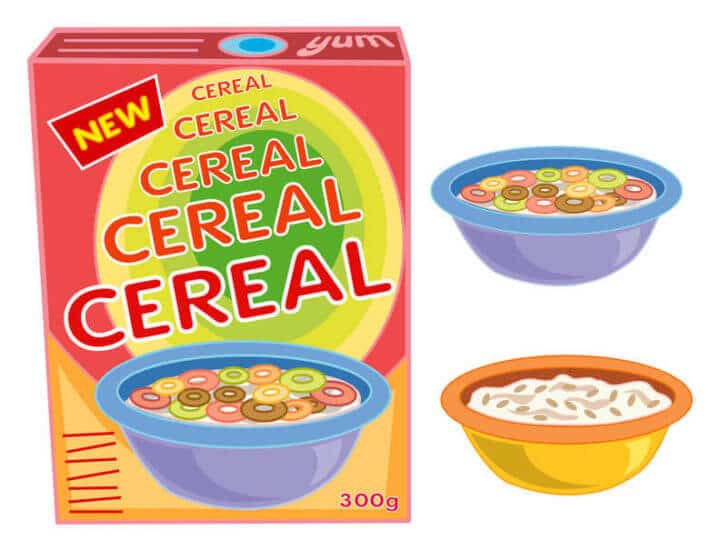Are you eating too much sugar? Excess sugar can certainly give you a short term boost, but it is more likely to lower your energy levels in the long run. Your adrenal glands need to produce cortisol to manage the excess sugar. Placing an extra burden on them can tip you over into adrenal fatigue if you already stressed and tired.
You should not be aiming to eliminate carbohydrates entirely when recovering from adrenal fatigue (after all, vegetables contain carbs too!). However, limiting your intake of sugars is a great step towards a healthier diet and better energy levels. The first step of course, is to know which foods contain sugar.
We all know that cake and sweets are full of sugar, but you may be surprised by just how many foods and products contain hidden sugars. Here are 19 of the most surprising sources of sugar in your diet!
- Tomato Ketchup
Though tomato sauce might give the impression of being a tasty, savory and salty vegetable based food; it has a surprisingly high sugar content with 4.2g in a single serving. - Canned Meats
In order to help canned meats remain edible for a much longer period than fresh meats, manufacturers use a large quantity of salt, water and sugar to act as a binder and preservative. - Pancake Mix
Though people do not necessarily add sugar to pancake batter when making a fresh batch, many store-bought mixes contain a quantity of sugar for flavor and preservation. - Cough Drops
Sugar is added to most brands of cough drops to make the medicine-filled drops more palatable for consumption. Sugar can also give a slight energy boost for those feeling under the weather. - Packaged Cereals
Though a lot of breakfast cereals profess to be extremely healthy and beneficial, there can be a considerable amount of sugar hidden behind those promises of goodness and fiber. - Bread
Both white and brown bread can contain large quantities of hidden sugar. Some loafs claim to be super healthy, but they can contain as much as 5g in a 100g serving. - Dried Fruit
Dried fruit is a deceptively unhealthy snack that fools many people who think it is a beneficial food. Certain dried fruits can contain up to 53g of sugar in a 100g serving. High glycemic fruits include raisins, dates, and figs. - Red Wine
Though admittedly it is a low amount, red wine contains natural fructose and small levels of residual sugar from the fermentation process; roughly 0.6g per serving. - Chewing Gum
Standard chewing gum contains amounts of sugar that helps to increase saliva flow, but the sugar content can also lead to decay causing acids being produced in the mouth. - Mustard
Though having a distinctly savory and sometimes spicy flavor, English, French and American mustards all contain hidden amounts of sugar; roughly 0.9g in a 100g serving. - Bacon
Often added in the form of raw sugar, turbinado sugar or cane juice, bacon is a source surprising source of hidden sugar and a food that many people often overlook. - Soy Sauce
Containing roughly 0.4g of sugar per 100g serving, soy sauce is another of the surprising food items with hidden sugar. With its strong savory flavor, many do not associate soy sauce with sugar. - Baby Food
A number of baby food brands have recently been criticized for having high sugar levels and low nutrient levels. If you are using formula, make sure to buy a reputable organic brand. - Stamps
OK this is not really a food, but the backs of stamps are given their useful sticky quality by a layer of diluted sugar soap. This explains the slightly sweet taste that occurs when licking one to stick on a letter. - Chewing Tobacco
Chewing tobacco, or smokeless tobacco, is another source of hidden sugar. It is estimated that around 34% of a standard size pouch of chewing tobacco is made up of a simple sugar ingredient. - Gravy
As opposed to homemade meat juice gravy, many brands of gravy granules contain hidden amounts of sugar. There is commonly 0.8g of sugar in every 100g serving. - Pretzels
Despite their savory flavor, pretzels do often contain added sugars. In fact, on average pretzels contain an estimated 2.8g worth of sugar per 100g. - Packet Soup
Due to the manufacturing process, packet soups contain a much larger quantity of sugar than would usually be added to a soup made from fresh at home. This is for both flavor and preservation. - Vitamins
Its a little ironic, but the vitamins that people take to preserve health are often filled with sugar. Again, this is for a combination of both palatable taste for consumption and for energy properties. Children’s vitamins are the worst culprit, especially the chewy ones.
As you can see, there are many food items with hidden added sugars. This is far from comprehensive – there are many more than those listed here. It is best to always read the ingredients label, and remember that there are many different names for sugar (dextrose, molasses, high fructose corn syrup, sucrose, maltodextrin, cane juice, fruit juice concentrate, treacle… the list goes on).




What are your thoughts on honey? Is it better to sweeten recipes with honey, rather than white table sugar? Obviously they are both sweeteners, so I understand that neither of them should be consumed frequently.
Also, is raw sugar better than regular sugar? This has always stumped me, since they are both SUGAR.
Love reading your articles!
It really depends from person to person. For example some people suffer from fructose malabsorption and should avoid (or limit) honey. In general terms though, honey is certainly a healthier option than regular table sugar. However, you should of course be trying to minimize your use of sweeteners in general!